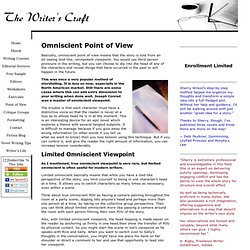

TAKING A CHANCE ON PATHOS. By EVA HOFFMAN; Eva Hoffman is an editor of The Book Review.

Her memoir ''Lost in Translation,'' about living in a new culture and language, will be published in January.Published: November 6, 1988 SELECTED STORIES By Andre Dubus. 476 pp. Boston: David R. Godine. $22.50. Emotional veracity is surely one of the most elusive elements in fiction. Mr. We are accustomed, in today's fiction, to characters who are wretched, or disconnected, or down and out. It is in these usually hidden lives that Mr. Random Name Generator. Fake Name Generator. Name That Character! By Anne Marble A character's name is a basic part of that character, but it can sometimes be hard to come by just the right name.

These tips might make that passage a little easier. Warning! Names Stick to Your Brain! If you can't think of a name right away, you might decide to try out a temporary name on a character. Ten Tips on Choosing Names Let the Names Reflect the Characters Give characters names that tell you something about them. Make Sure the Name Doesn't Belong to Someone Famous. Behind the Name: Meaning of Names, Baby Name Meanings. Unique, Uncommon, Unusual Baby Names for Boys and Girls, (Male, Female, Meanings) Character Profile Templates. Perspectives — The Writer’s Craft. In order to fully understand point of view in literature, we need to explore the different perspectives from which a story may be told.

Bear in mind that the Perspective is the scene as viewed through the eyes/mind of the chosen character. The story, however, can be told from any one of several points-of-view regardless of the perspective chosen. Single Major Character Viewpoint The story can be told from first, second or third person POV but it is told throughout by just one character.
The reader discovers everything in the story at exactly the same time as the viewpoint character does. The single-character perspective is the most common viewpoint used in children’s literature and a lot of adult literature as well. Minor Character Viewpoint Again the story can be told from the first, second or third person POV. This method isn’t chosen very often in modern literature, but can be used to good effect in literary works where you need to keep some distance to really see what is happening. Third Person Point of View — The Writer’s Craft. Enrollment Limited Sherry Wilson's step-by-step method helped me organize my thoughts and transform a simple idea into a full-fledged plot.

Without her help and guidance, I'd still be walking around with just another "great idea for a story. " Thanks to Sherry, though, I've published three novels and know there are more on the way! ~ Debi Faulkner, Summoning, LilyPad Princess and Murphy's Law "Sherry is extremely professional and knowledgeable in this field. As well as being technically proficient in many styles, she also possesses a rich imagination, offering suggestions and alternatives in a way that doesn't impose on the writer's own style.
Her observations are honest and valuable, beyond what many others can give. A. "WOW! I really appreciate the work you've done so far. --Lena Jones "Sherry Wilson has a deep understanding of the craft of writing and a natural gift for the art of writing. Being an editor myself, there are not too many people I would trust with my own work. Omniscient Person Point of View — The Writer’s Craft. Basically, omniscient point of view means that the story is told from an all-seeing God-like, omnipotent viewpoint.

You would use third person pronouns in the writing, but you can choose to dip into the head of any of the characters and reveal things that have occurred in the past or will happen in the future. This was once a very popular method of storytelling. It is less so now, especially in the North American market. Still there are some cases where this can add extra dimension to your writing when done well. First Person Point of View — The Writer’s Craft. When you tell a story through a viewpoint character using I or we, you are using first person point of view.

Example: The banging on my door reverberated within my skull like a giant church bell in an empty hall. I groaned and rolled onto my stomach, pulling the pillow over my head. Every detail of your story must be filtered through the storyteller. This impacts your choice of narrator—it may be, and most often is, your main character. If your main character cannot see, hear, touch, smell, taste, think, know or feel it, you can’t include it. First person point of view is the most reader friendly. This can be a comfortable point of view as it allows the writer to get right into the character’s head; however, beginners often find first person challenging because you really need to understand your character and his role.
The most common problem when using first person POV is that it is difficult to resist the urge to tell the reader everything rather than show it. Considerations: Second Person Point of View — The Writer’s Craft. Enrollment Limited Sherry Wilson's step-by-step method helped me organize my thoughts and transform a simple idea into a full-fledged plot.

Without her help and guidance, I'd still be walking around with just another "great idea for a story. " Thanks to Sherry, though, I've published three novels and know there are more on the way! ~ Debi Faulkner, Summoning, LilyPad Princess and Murphy's Law "Sherry is extremely professional and knowledgeable in this field. All Your Characters Talk The Same — And They're Not A Hivemind! One Of Your Crucial Characters Isn't Working. What Do You Do?